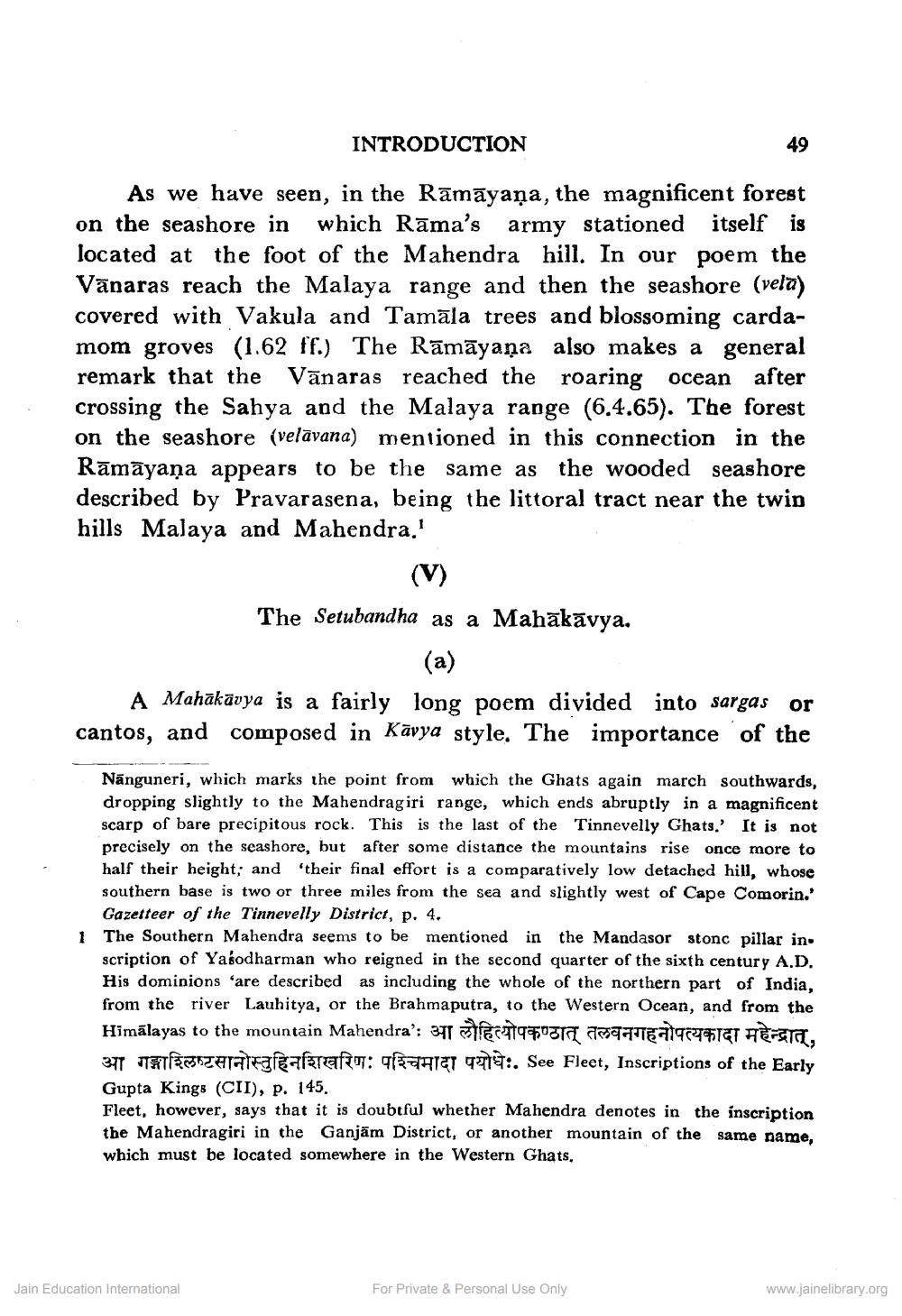________________
INTRODUCTION
49
As we have seen, in the Rāmāyaṇa, the magnificent forest on the seashore in which Rāma's army stationed itself is located at the foot of the Mahendra hill. In our poem the Vānaras reach the Malaya range and then the seashore (vela) covered with Vakula and Tamāla trees and blossoming cardamom groves (1.62 ff.) The Rāmāyaṇa also makes a general remark that the Vānaras reached the roaring ocean after crossing the Sahya and the Malaya range (6.4.65). The forest on the seashore (velāvana) mentioned in this connection in the Rāmāyaṇa appears to be the same as the wooded seashore described by Pravarasena, being the littoral tract near the twin hills Malaya and Mahendra.'
(V) The Setubandha as a Mahākāvya.
(a) A Mahākävya is a fairly long poem divided into sargas or cantos, and composed in Kāvya style. The importance of the
Nănguneri, which marks the point from which the Ghats again march southwards, dropping slightly to the Mahendragiri range, which ends abruptly in a magnificent scarp of bare precipitous rock. This is the last of the Tinnevelly Ghats.' It is not precisely on the seashore, but after some distance the mountains rise once more to half their height; and their final effort is a comparatively low detached hill, whose southern base is two or three miles from the sea and slightly west of Cape Comorin.' Gazetteer of the Tinnevelly District, p. 4. The Southern Mahendra seems to be mentioned in the Mandasor stonc pillar in. scription of Yabodharman who reigned in the second quarter of the sixth century A.D. His dominions are described as including the whole of the northern part of India, from the river Lauhitya, or the Brahmaputra, to the Western Ocean, and from the Himālayas to the mountain Mahendra': 3T TEST19OTT OTatat9TTET FEESTI, 31 KESETATEAfgaferaft: EFET TETT:. See Fleet, Inscriptions of the Early Gupta Kings (CII), p. 145. Fleet, however, says that it is doubtful whether Mahendra denotes in the inscription the Mahendragiri in the Ganjam District, or another mountain of the same name, which must be located somewhere in the Western Ghats.
Jain Education International
For Private & Personal Use Only
www.jainelibrary.org




